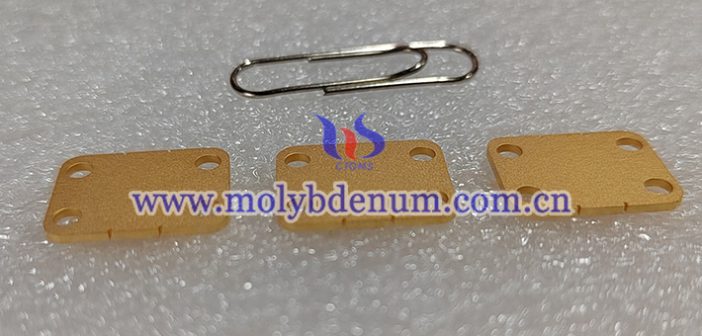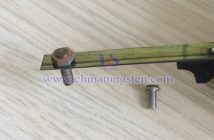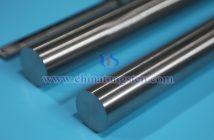With the development of electronic devices in the direction of miniaturization, high integration and high power density, the thermal management capability of molybdenum-copper alloys is facing higher technical requirements. How to further optimize its thermal conductivity, thermal diffusivity and thermal stress control performance has become an important topic in current materials research and engineering practice.
1. Optimization of material composition and organizational structure
Ingredient design
The thermal conductivity and thermal expansion properties of molybdenum copper are highly dependent on its molybdenum to copper ratio. In general, the higher the molybdenum content, the lower the coefficient of thermal expansion, but the thermal conductivity decreases; The higher the copper content, the higher the thermal conductivity, but the higher the coefficient of expansion. Therefore, according to the trade-off requirements of thermal conductivity and thermal expansion for different applications, a reasonable design of molybdenum-copper ratio (e.g., 70Mo-30Cu or 60Mo-40Cu) is the first step to optimize thermal management performance.
Microstructural manipulation
Optimizing the microstructure of the alloy, such as reducing porosity, improving interfacial bonding, and making the copper phase continuously distributed, can help improve the overall thermal conductivity. Studies have shown that the higher the density, the smoother the thermal conduction path and the smaller the thermal resistance. At the same time, the better the bonding strength of molybdenum and copper interface, the lower the thermal interface resistance, which is conducive to achieving more efficient heat conduction.
Second, the improvement of manufacturing technology
Improvement of the liquid phase copper permeability method
Molybdenum copper is often prepared by powder metallurgy and liquid-phase copper permeation processes. By optimizing the sintering parameters (e.g., temperature, holding time, powder particle size) of the molybdenum framework, the compactness of the molybdenum matrix can be improved, thereby reducing pore formation during copper seepage. In addition, controlling the seepage rate and impregnation uniformity of copper can avoid local copper-poor areas or molybdenum-clad copper, ensure uniform distribution of copper phases, and improve thermal conductivity.
Nanocomposite enhancement technology
In recent years, the use of nanoparticles (such as carbon nanotubes, graphene) to enhance molybdenum copper and improve the interfacial thermal conductivity has become a new direction. Nanofillers not only enhance the thermal coupling between copper and molybdenum, but also inhibit thermal expansion while maintaining high thermal conductivity, improving overall thermal stability.

3. Surface treatment and coating technology
Molybdenum-copper surface treatment also plays a key role in its thermal interface management. By electroplating or electroless plating, a layer of metals with high thermal conductivity and low interfacial thermal resistance (such as Ni, Ag, Au) can be deposited on the surface to enhance the contact heat transfer efficiency with heat sinks and substrates, and reduce the thermal interface impedance. In addition, technologies such as laser cladding and plasma spraying can also be used to construct microscopic thermal channels on the surface to further improve heat flow efficiency.
Fourth, the matching use of thermal interface materials (TIM).
Molybdenum-copper alloys are often used in conjunction with ceramic substrates, encapsulation cavities, or heat sinks. The selection of thermal interface materials with high thermal conductivity and matching thermal expansion coefficients (such as thermal conductive gels, phase change materials, or carbon nanocomposites) can reduce the thermal resistance and thermal stress of the interface, and improve the thermal management efficiency of the overall system.
5. Design optimization combining simulation and experiment
The finite element thermal simulation tool can be used to simulate the heat conduction process of molybdenum-copper alloy devices, and the behavior of materials under different thermal loads, such as temperature gradient distribution, heat flux density distribution, and stress concentration area, can be evaluated in advance. The simulation results can be used to optimize the material shape, thickness, structural layout and hot aisle design, and combined with experimental verification, the pertinence and effectiveness of thermal management can be further improved.




